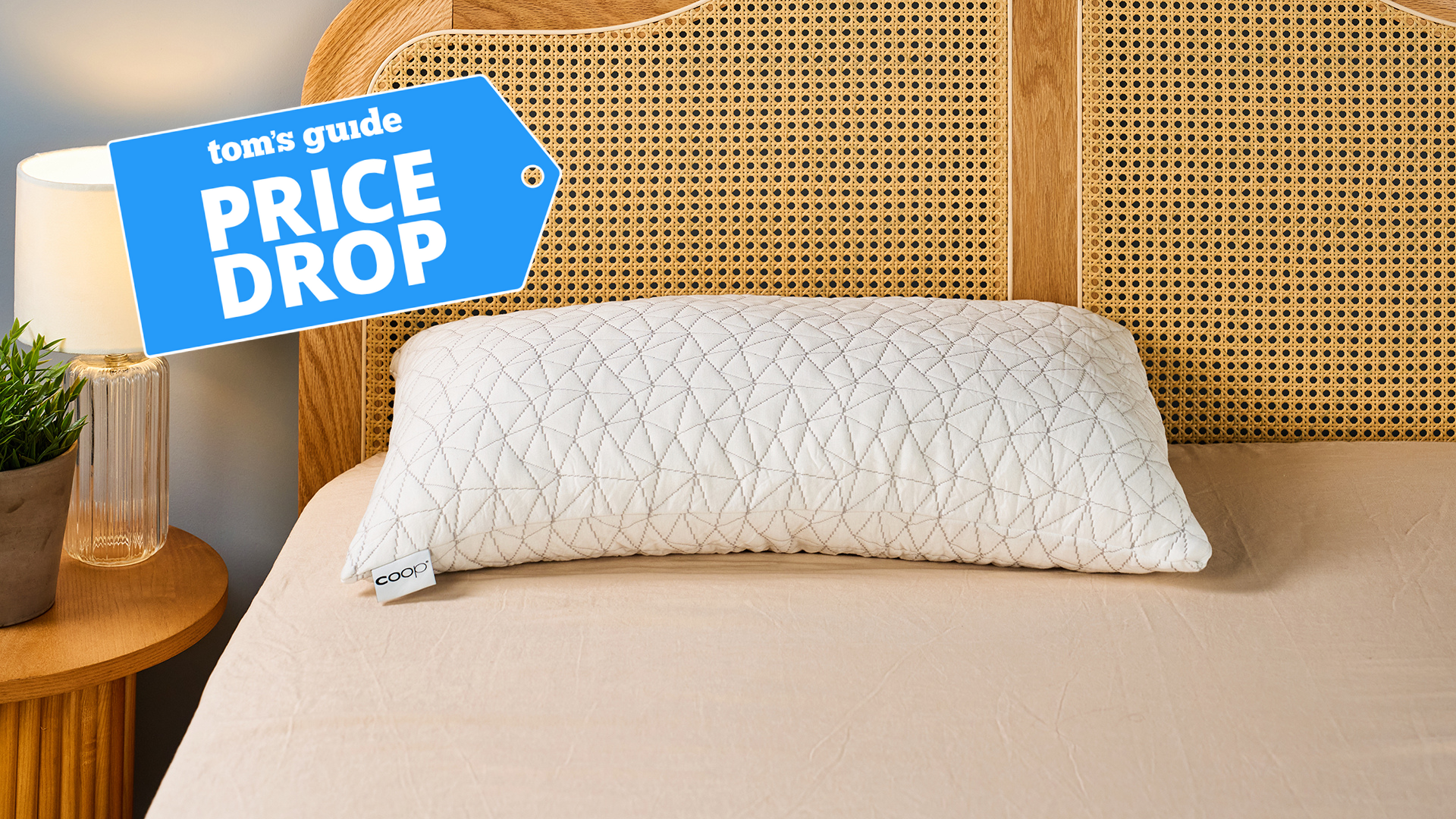I've tested 100 monitors and these are the best ones for work, gaming and everyday use
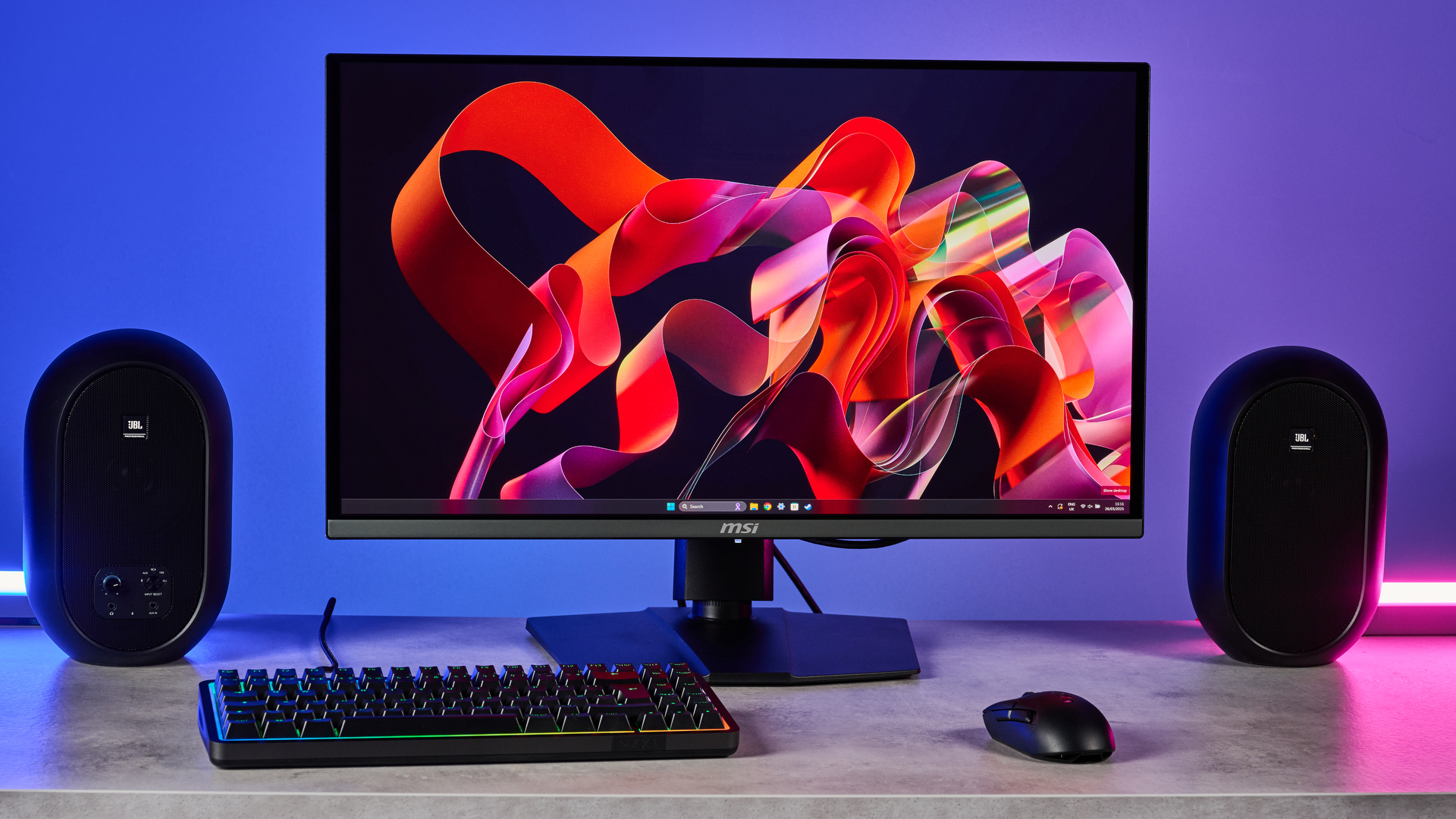
If you're looking to give your productivity while working a boost, make games look buttery-smooth with high detail or have enough room to edit videos without scrolling, you'll want to grab yourself one of the best monitors around.
With years of testing monitors of all specs and sizes, from 4K OLED displays and ultrawide curved screens to budget-friendly 1080p monitors, we've whittled down the best that you can pick up right now. My team of display experts and I would know, too, using professional-grade equipment such as a Klein K 10-A colorimeter to assess how accurate the colors are, along with HDR brightness and response times.
So, what's the top monitor that should be on most people's radar? For a mix being one of the greatest for gaming and productivity, boasting a satisfying curved display, you can't go wrong with the LG UltraGear 45GR75FC. But there's plenty more choices to suit your needs.
Whether it's for the home office, purely for gaming or a combination of both, our list of the best monitors below will point you in the right direction. Only need it for games? Head on over to our list of best gaming monitors.
Our top picks
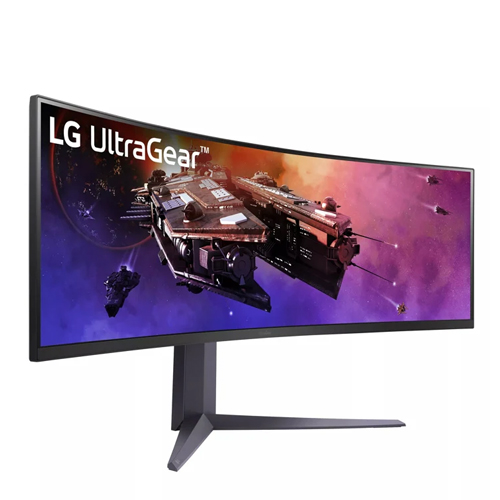
Not only is this LG both one of the best gaming and finest curved monitors, it's also my pick for the best overall PC screen. Its blazing performance, sharp 3.5K picture and immersive 1500R curvature make it the ultimate PC panel for both work and play.
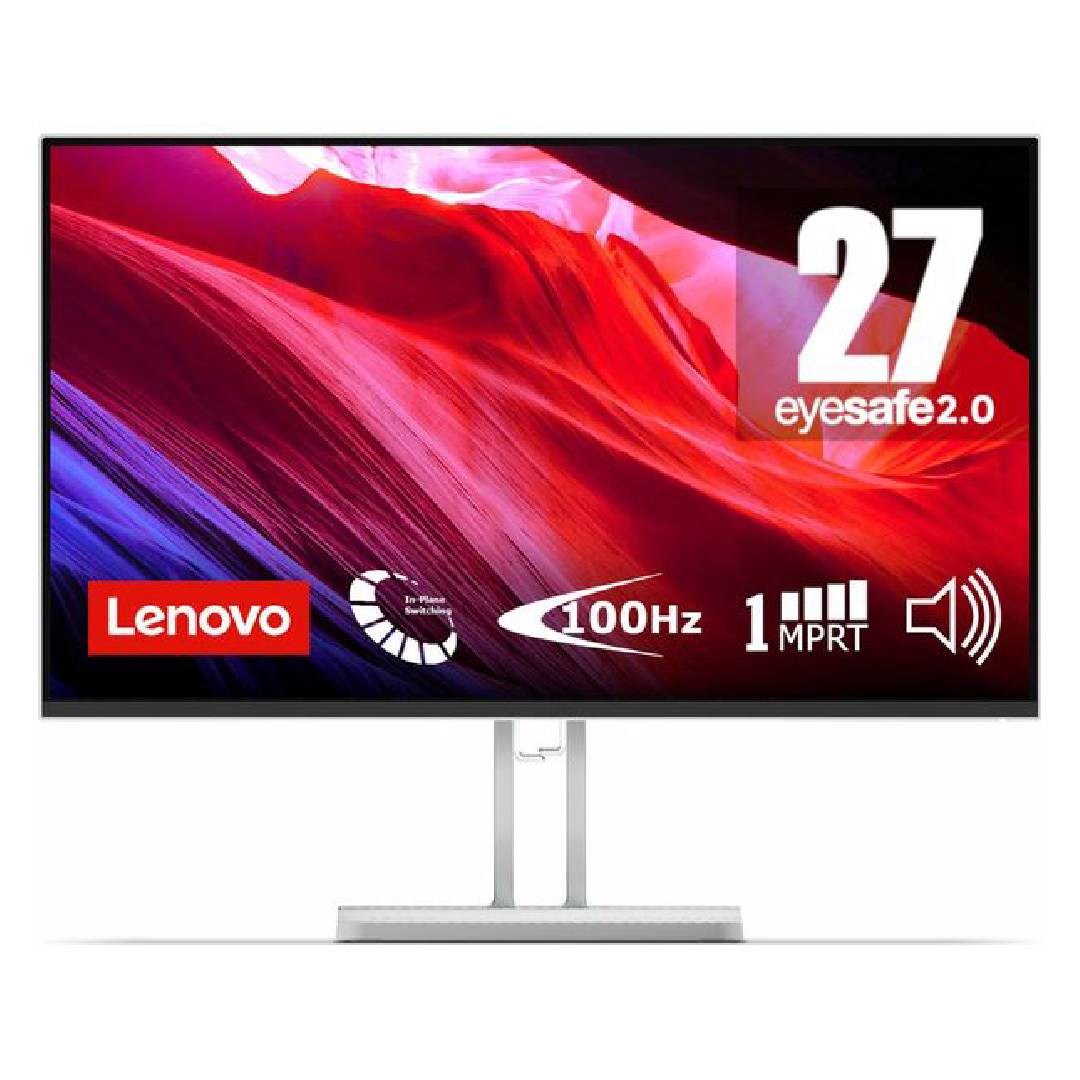
Despite being a budget-friendly monitor, the Lenovo L27i-4B still manages to be a great fit for office work, and even some casual gaming, thanks to its 100Hz refresh rate. Not bad for just over $100.
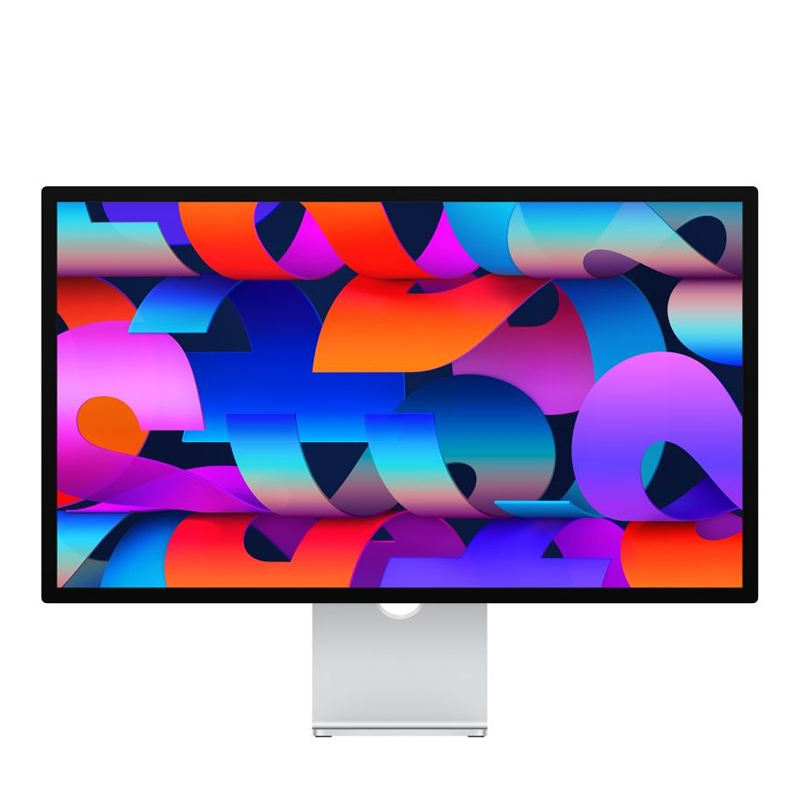
A great 5K monitor that has a lot more to offer than just a fantastic 27-inch screen. We love its six-speaker sound system and 12MP ultrawide camera.
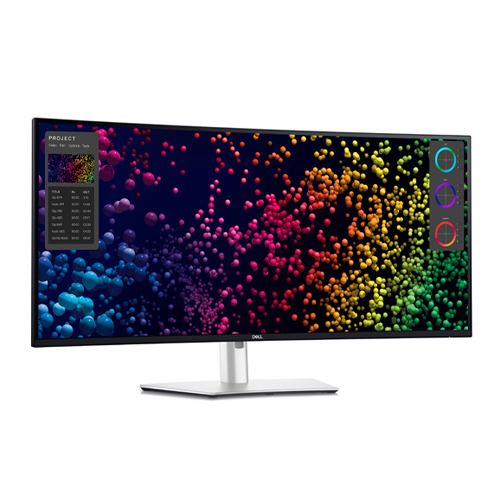
This large and in charge 40-inch curved monitor is fantastic. At $1,900, it's going to put a big dent in your change purse, but picture quality is outstanding and it's a producitivity machine.
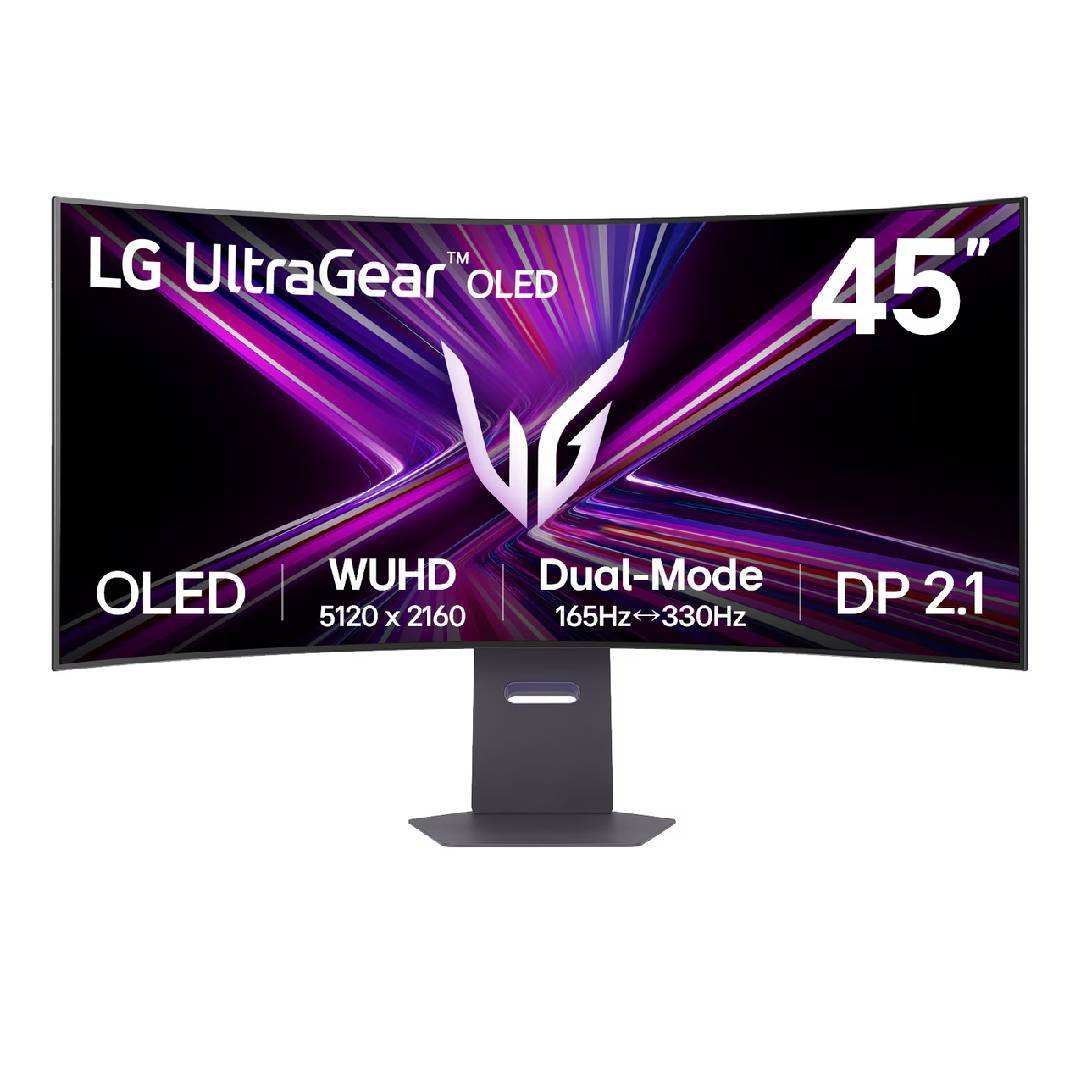
Curved monitors excel at offering a more immersive experience, and there's no finer example than the LG UltraGear 45GX950A-B. With its dual display modes (5K with 165Hz and 2K with 330Hz), this 45-inch curved OLED monitor is a visual treat.
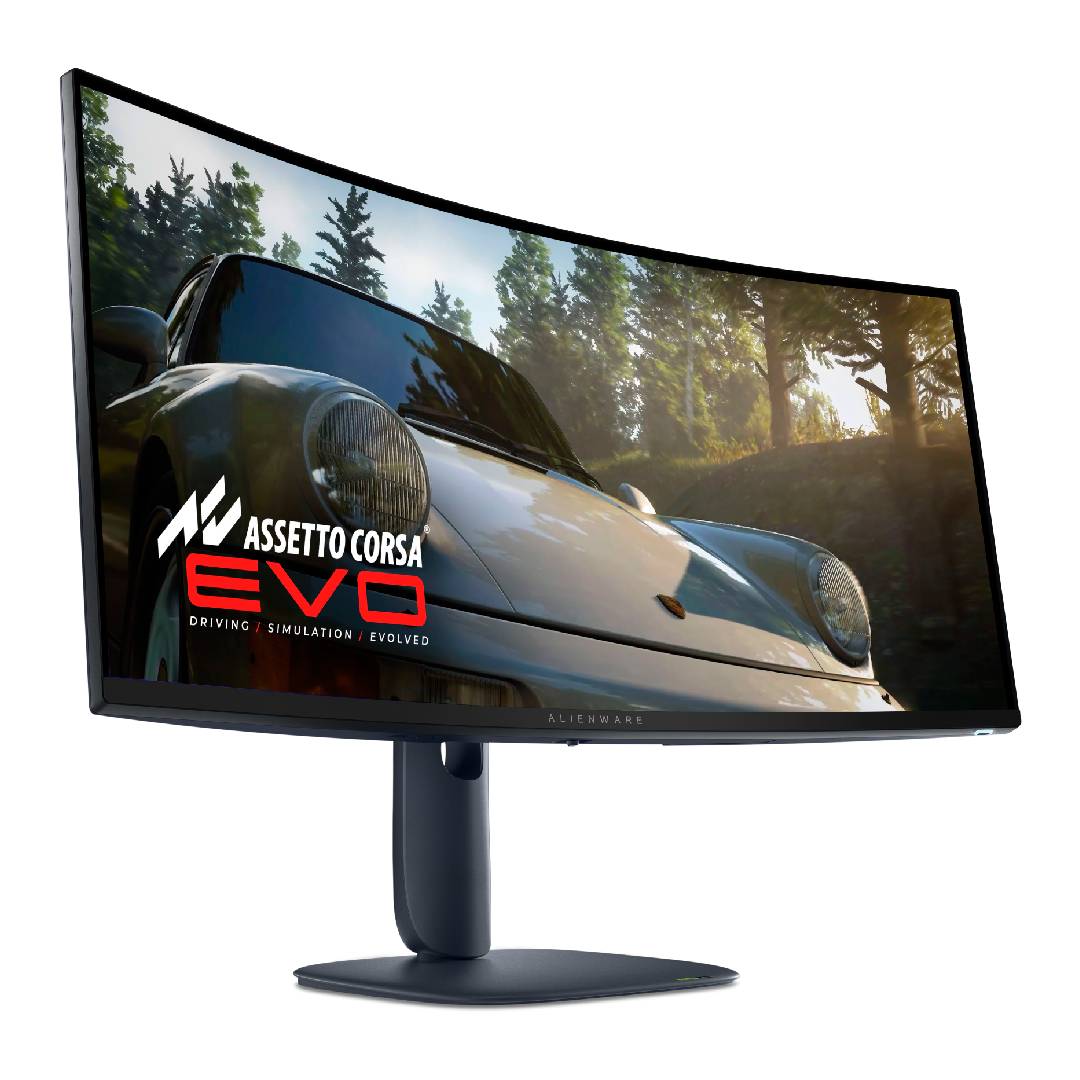
At just $799, it's unbelievable what the Alienware AW3425DW offers. From its smooth 240Hz refresh rate and lovely 1800R curvature to its sharp 1440p resolution and vivid colors, this display belongs on many desks for both gamers and creators alike. The HDR brightness isn't the best, but otherwise, this Alienware display is hard to beat.
Load the rest...
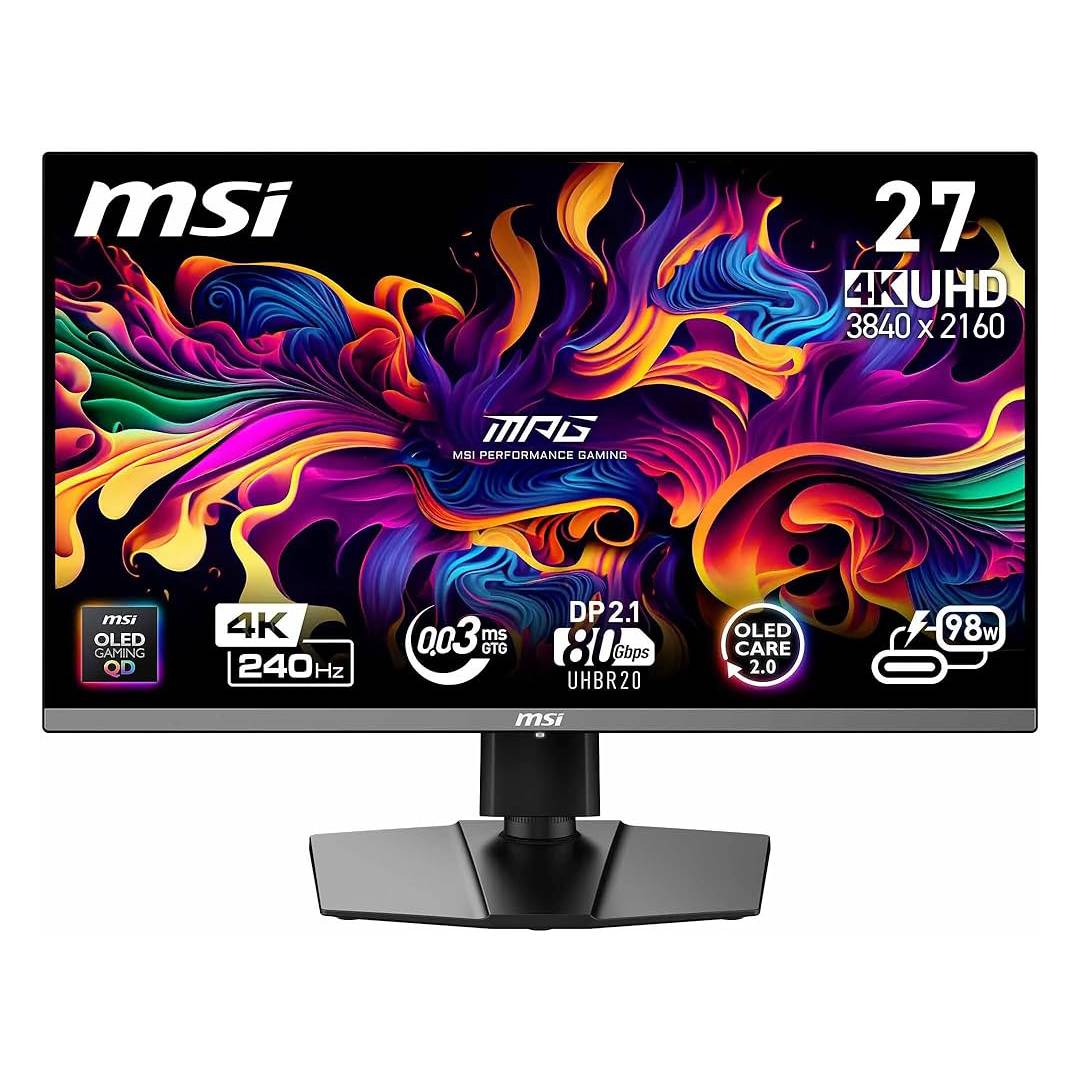
Whether it's gaming or productivity, everything that shows up on this 27-inch MSI MPG 272URX (quite the name, I know) absolutely shines. This is QD-OLED at one of its finest, and it helps that it boasts a 240Hz refresh rate and 0.03 response rate.
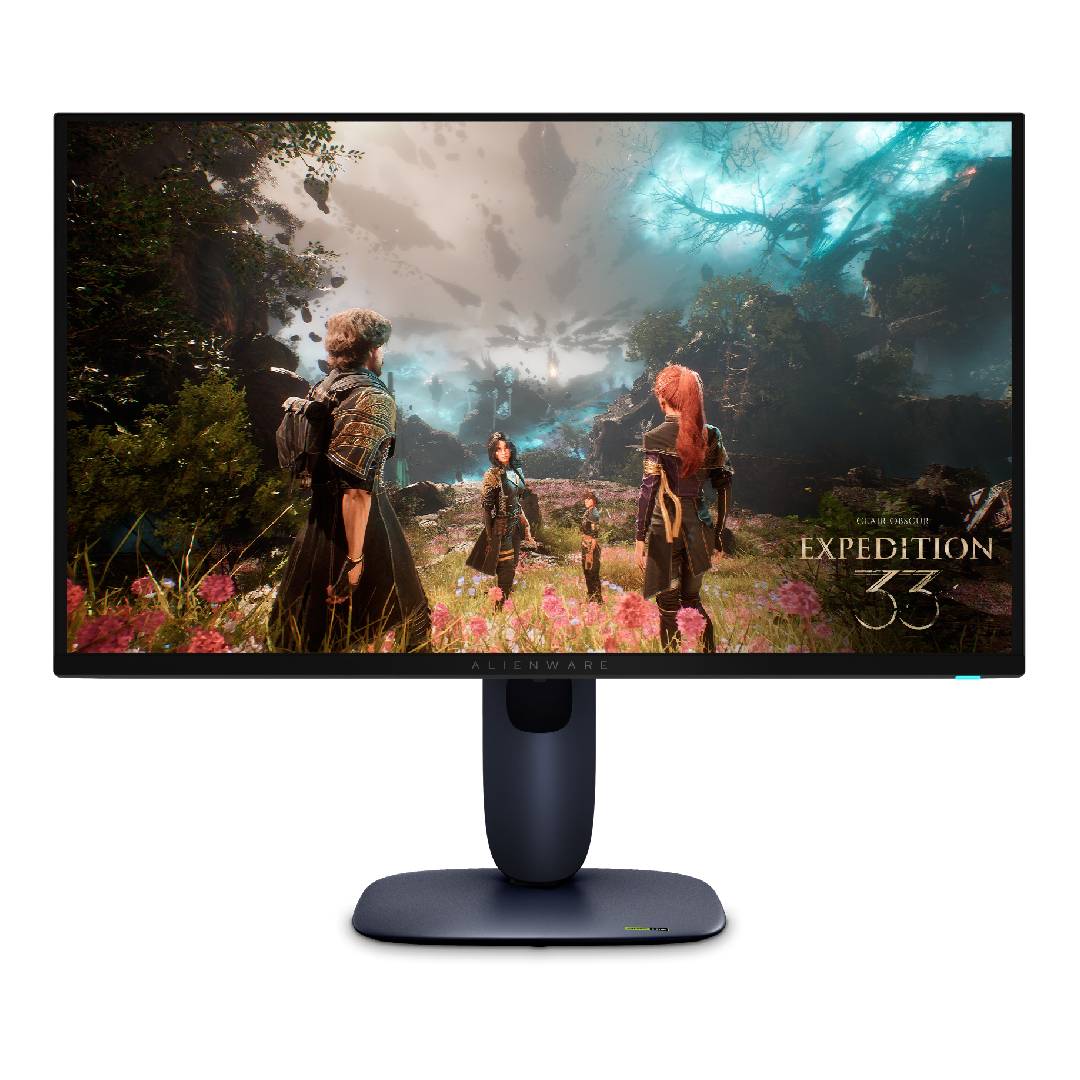
The Alienware AW2752Q offers some of the sharpest, smoothest visuals around, making this 27-inch monitor a 4K king. Plus, its OLED panel offers some impressive color accuracy.
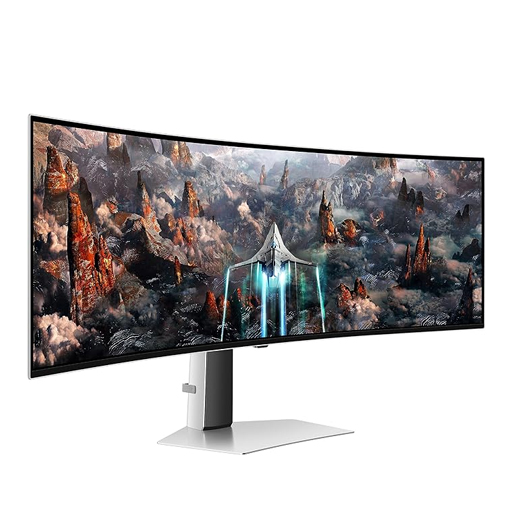
A monitor that is as stupendous as it is sizable. This utter goliath of a screen is an OLED beast with near perfect picture uniformity that’s capable of playing the best PC games at a knockout 240Hz.
Look, there are a bunch of monitors out there with ever-confusing model names (does the "LG UltraGear 45GX950A-B" mean that there's an "-A" version? I've checked, and apparently not). But there are a few key details to pay attention to for any monitor, and some specific advice for certain specialized uses.
How to choose the best monitor?
Size: A larger monitor is generally a better purchase simply because it offers the most visual real estate, which is better for both full-screen media consumption and split-screen multitasking. Higher resolution is also better, since it allows better detail and lets you see more information in the same screen size. That old phrase "bigger is better" applies to both here, and we recommend opting for larger screens and higher resolution whenever possible.
Response time: If you care about playing the latest games under the most optimal conditions, you'll want to look for a monitor with low response time. This measures how long it takes for the display to respond to what you're doing, and it's typically expressed as a measurement (in milliseconds) of how long it takes a pixel on the display to go from one color to another and back again.
Unless you're planning to play games that demand quick reflexes or pinpoint accuracy, you really don't need to worry about response time. In general, anything under 10ms is good, though for gaming, under 5ms is better. Many gaming monitors promise response times as low as 1ms, which is about as good as you can hope for.
Refresh rate: Refresh rate measures how many times per second your monitor is able to draw a new image. It's measured in Hertz, and again, if you're not planning on doing a lot of intense gaming, you probably don't need to worry about this very much. Most monitors achieve refresh rates of 60Hz or less, and that's plenty for watching videos or getting work done. However, if you want to play games at higher than 60 frames per second, or you're planning on working with video at framerates higher than 60 fps, you'll want a monitor with higher refresh rates. 120Hz is good, 144Hz is better, and there are even gaming monitors that offer refresh rates of 240Hz or higher.

From bang-for-your-buck 1080p flat displays to ultrawide 4K curved monitors that are wicked for PC gaming, I've tested my fair share of brilliant monitors over the years. Whether you're in need of a simple but exemplary display for work or require all the details of OLED with a 120Hz refresh rate, there's always a monitor out there that will suit your fancy.
The best monitors you can buy today
Why you can trust Tom's Guide
The best overall monitor
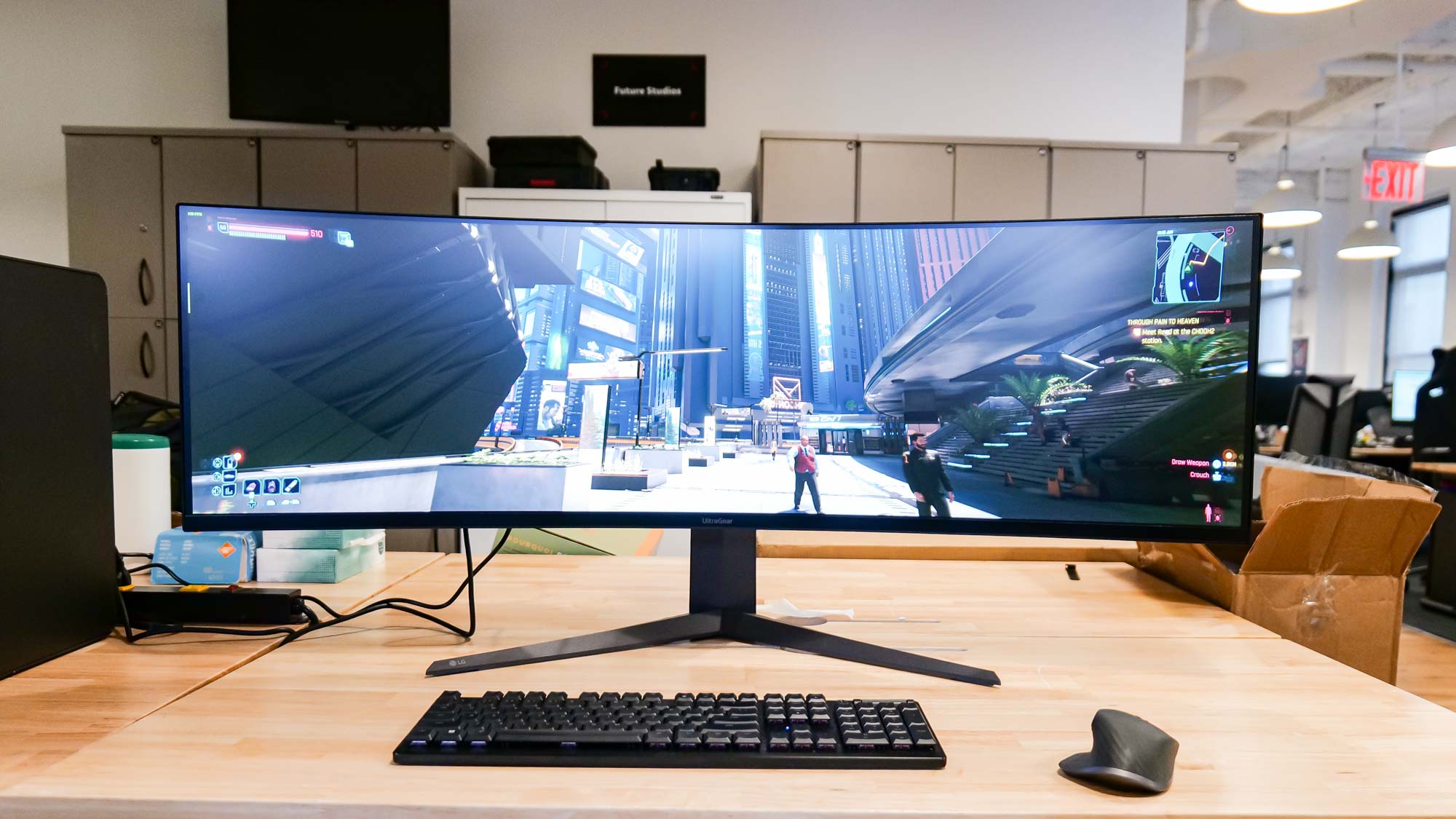
Specifications
Reasons to buy
Reasons to avoid
This wonderful LG Ultragear 45GR75DC screen ticks every box from what you could want from a modern PC monitor, whether you’re going to be using it for video or image editing or you mainly plan to play the best PC games on this behemoth.
The LG UltraGear 45GR75DC is damn near a perfect monitor that is superbly priced for the features it offers. For $899, (and LG has already started offering this amazing panel for $100 less than that during certain flash sales) you’re getting an unbelievable amount of bang for your buck. Just take into account that you’re going to need a fair amount of office space to house this supersized screen.
This 45-inch monster may require a large desk, but its 5,120 x 1,440, 32:9 panel makes it a dream display for productivity tasks, even though it's primarily marketed as a gaming monitor. With a 200Hz refresh rate, 1ms response times and that utterly immersive 1500R curvature, there’s no other monitor currently out there on the market that offers so much for both professionals working from home and hardcore gamers at such a keenly competitive price point.
Read our full LG UltraGear 45GR75C review.
The best budget monitor
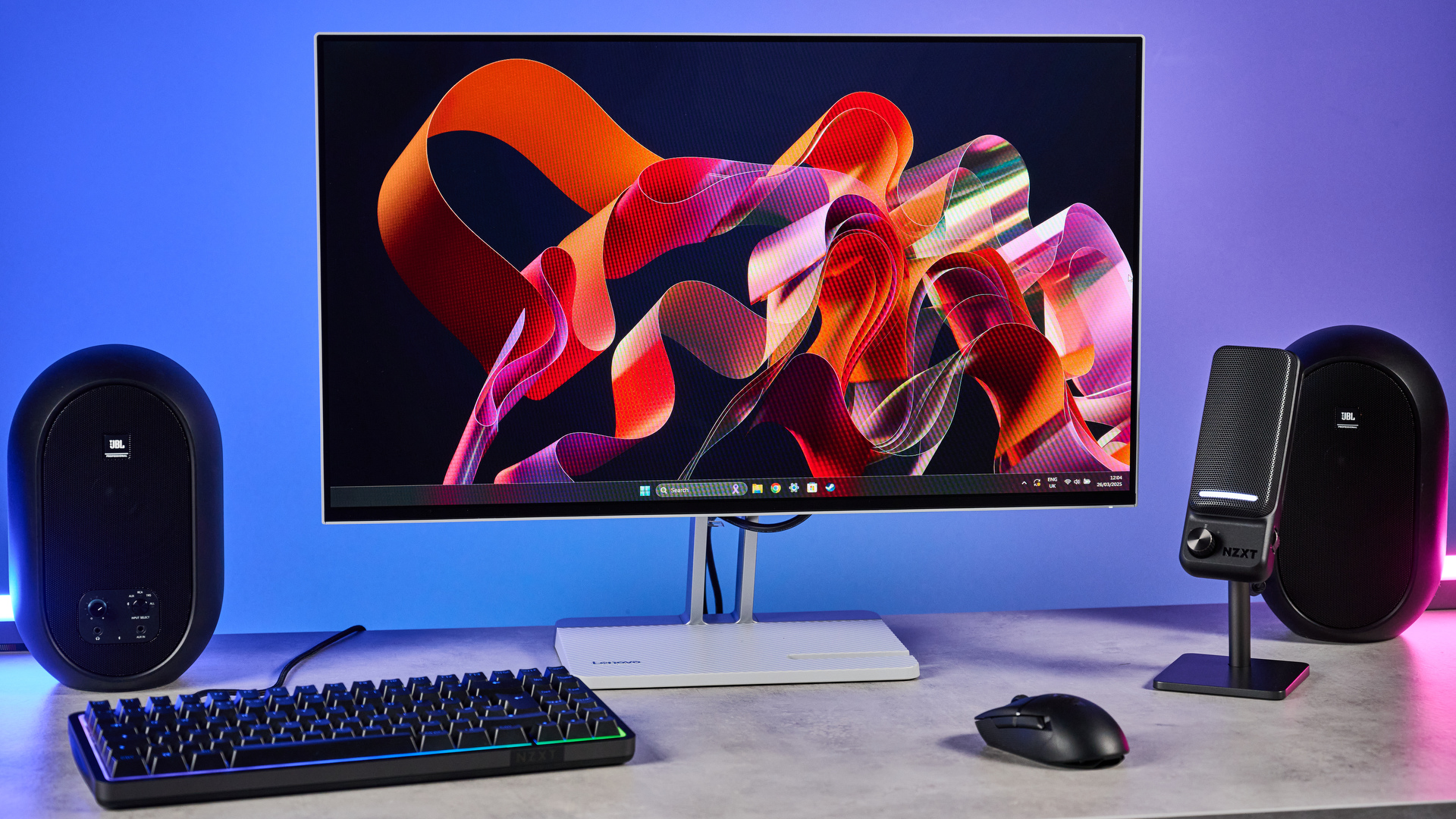
Specifications
Reasons to buy
Reasons to avoid
I know. On paper, this 27-inch Lenovo L27i-4B doesn't seem like much, but when you factor in its $109 / £150 price alone, it opens up plenty of options for first-time buyers, office workers or those thinking about getting a simple yet commendable external display.
It sports a simple, minimalist design that can fit into any setup, along with intuitive controls to navigate around settings for minor adjustments. As for its display, it's bright enough for all kinds of work, and is even useful for photo and video editing.
With its two HDMI 1.4 ports (and even a Legacy VGA port for those older machines), it acts great as a screen extender for your laptop or other devices. What's more, it's not even bad for some casual gaming, as its 100Hz refresh rate and 4ms response rate (slightly high compared to other monitors, for sure) make games look fairly smooth.
While it lacks HDR and height adjustment, the L27i-4B is a cost-effective upgrade from a single laptop or monitor, and that goes far for anyone in need of a pocket-friendly screen on their desk.
Read our full Lenovo L27i-4B review.
The best MacBook monitor
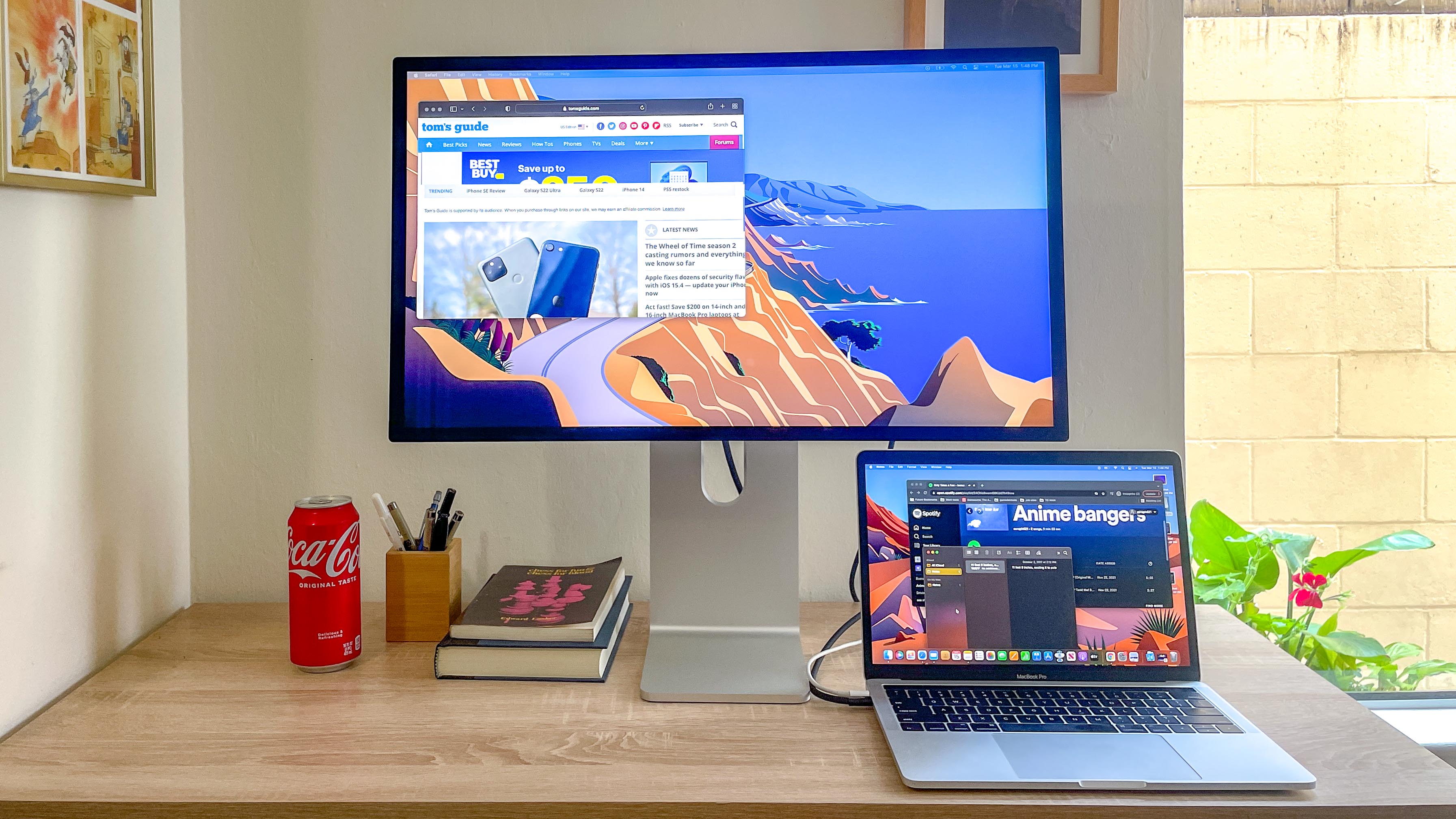
Specifications
Reasons to buy
Reasons to avoid
“Immerse yourself in a 5K dream” is how Apple continues to promote its exceptionally sharp-looking monitor. The 27-inch Studio Display is a truly terrific 5K (5120 x 2880) monitor, one that delivers a lot of the value of Apple's $6,000 Pro Display XDR in a much more affordable (though hardly cheap) package.
Starting at $1,599 for the standard class version and rising to $1,899 for the nano-texture glass option, it’s still obviously expensive. Yet if you’ve got that sort of cash to spare, you definitely won’t be disappointed by a monitor that boasts exactly the sort of pristine picture quality I’ve come to expect from Apple displays throughout the years.
Like the Pro Display XDR, the Studio Display offers useful features for creative professionals, including a range of reference modes and P3 wide color gamut support. It also has unique features that any Mac user can enjoy, like an ultra-impressive (for a monitor) six-speaker sound system and a 12MP ultrawide camera that supports Apple's Center Stage feature, courtesy of an onboard A13 Bionic chip.
With its ultrawide camera, fantastic speaker setup and gorgeous 27-inch 5K screen, this is easily one of the best monitors for MacBook Pro owners seeking an external display.
Read our full Apple Studio Display review.
The best ultrawide monitor
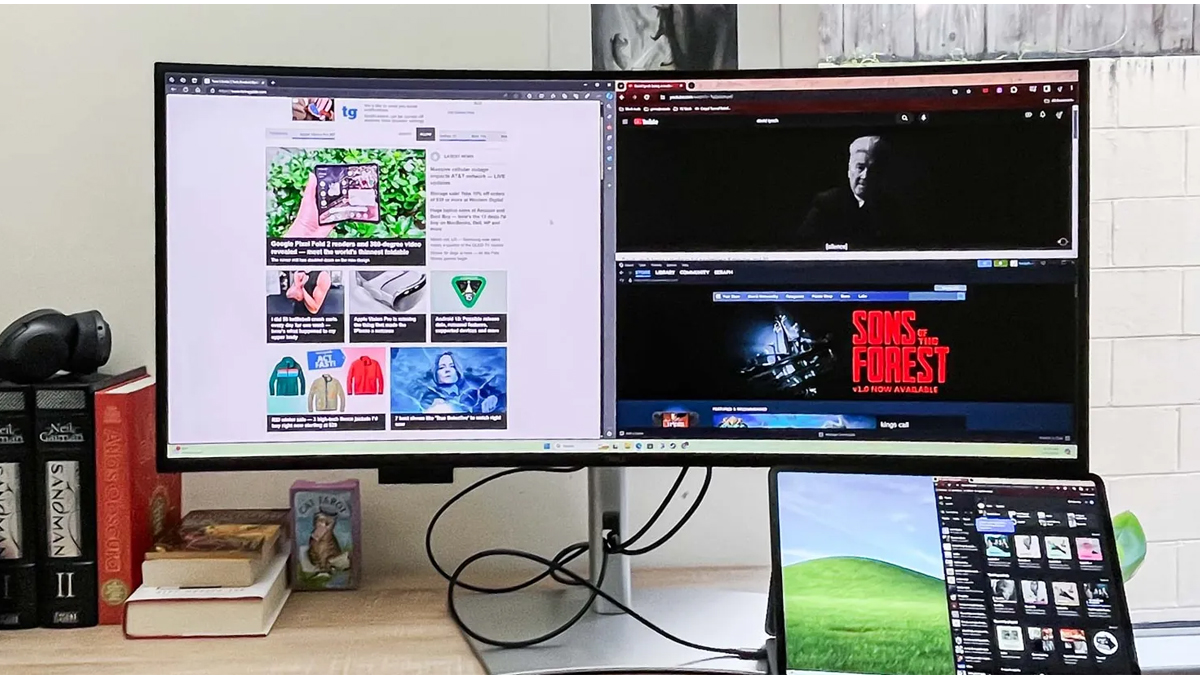
Specifications
Reasons to buy
Reasons to avoid
The Dell UltraSharp 40 Curved Thunderbolt Hub Monitor is a thing of beauty, if not a tad pricey at $1,900. Sure, it costs as much as a premium desktop PC, yet that price is justified in large part thanks to the UltraSharp’s outstanding color reproduction, its wonderful 5K/120Hz curved screen and a port selection that is seriously tough to top.
Big is beautiful, right? That's certainly the case with Dell UltraSharp 40 Curved Thunderbolt Hub Monitor, which is a total beast when it comes to productivity. This 40-inch model it's not exactly affordable, and you’ll certainly need a good amount of desk space to get the most out of it. Thankfully, smaller, far cheaper versions are available if you’re working with a cramped office setup.
What really separates the UltraSharp from other curved monitors is its pop-out, front-facing USB hub, which is not only great for charging devices, but also when it comes to decluttering your desk by offering a great cable management solution. This is a truly unique display even by curved monitor standards, which is why it gets the nod from me for the best and most interesting curved PC display you can pick up today.
Read our full Dell UltraSharp 40 Curved Thunderbolt Hub Monitor review.
The best curved monitor
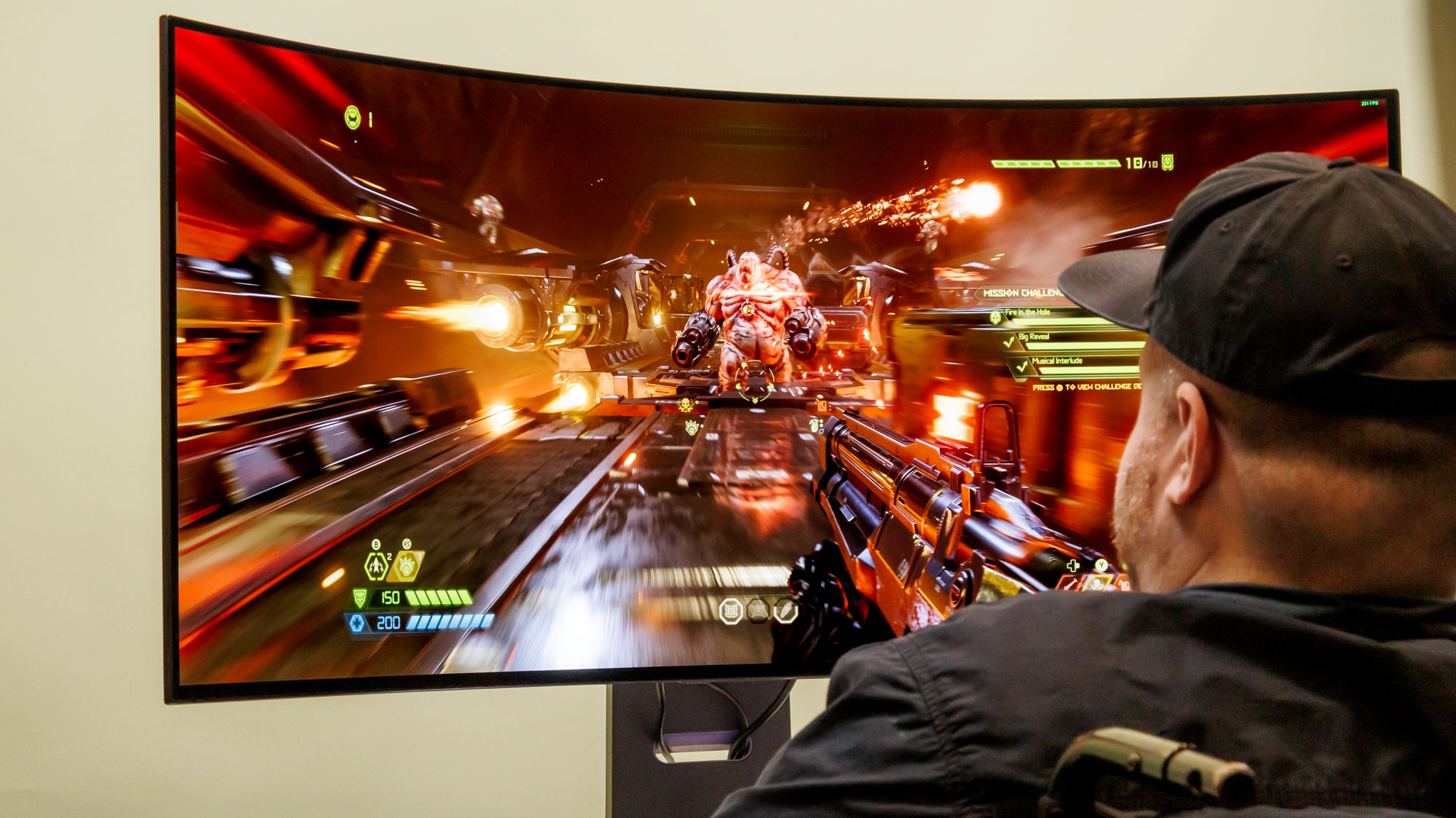
Specifications
Reasons to buy
Reasons to avoid
With its stunning 45-inch curved OLED panel, the LG UltraGear 45GX950A-B ranks among the most impressive curved monitors out there right now. It excels at creating an immersive gaming experience for nearly any PC game you throw at it, further enhanced by colors that practically leap off the screen.
Switching between its dual display modes is straightforward, and impressively, its curved design also lends itself well to productivity. While its $1,999 price is a significant investment and its brightness, typical for an OLED, doesn't exactly shine, the monitor's phenomenal picture quality and compelling dual resolution/refresh rate options (5K/165Hz and 2K/330Hz) will satisfy.
It's an excellent high-end option for PS5, Xbox or PC, and for those seeking a versatile display that can handle work and even serve as a TV, you'll be hard-pressed to find a finer curved monitor.
Read our full LG UltraGear 45GX950A-B review.
The best value monitor
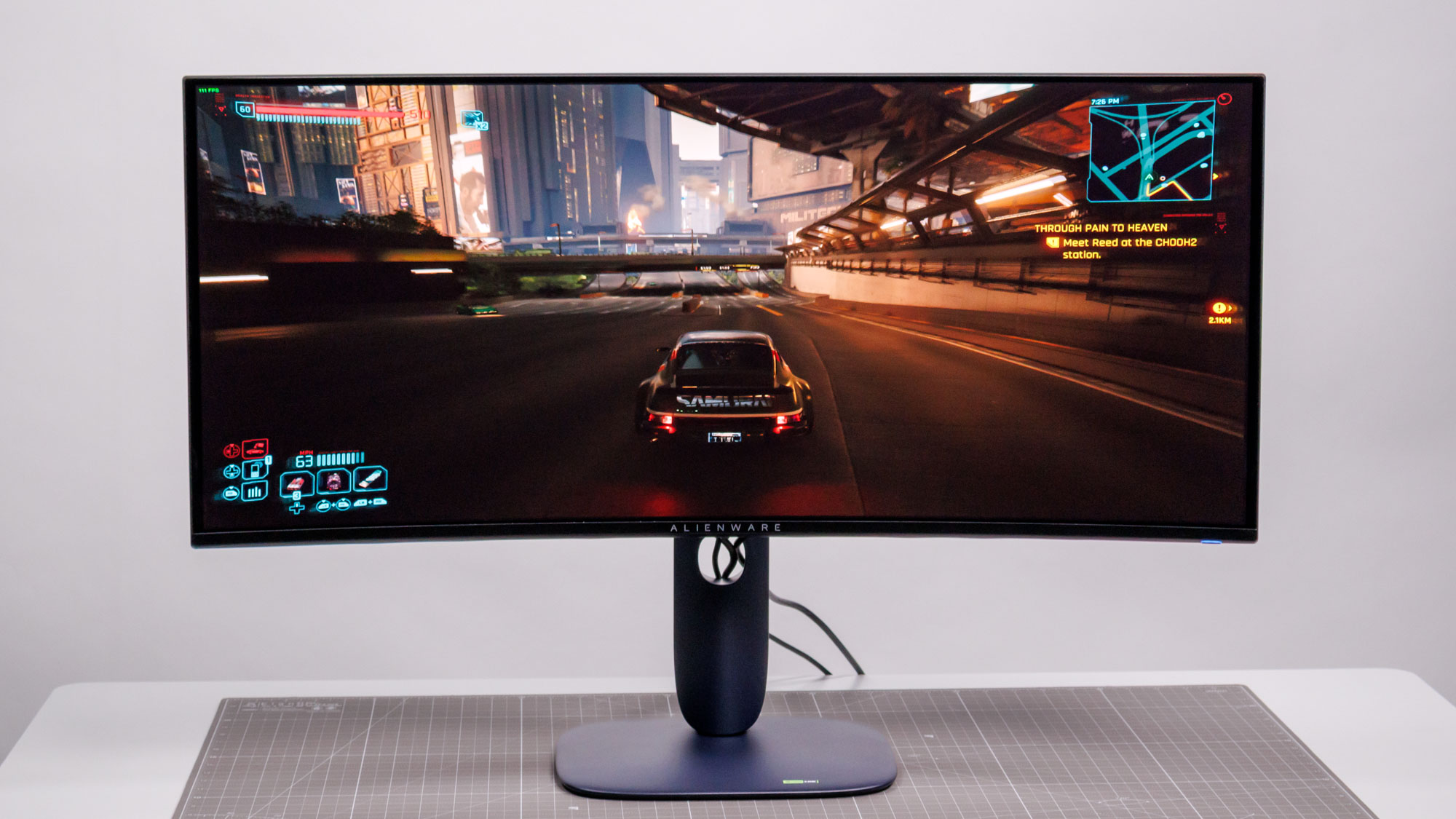
Specifications
Reasons to buy
Reasons to avoid
We were big fans of the Alienware AW3423DWF, and after a small number change (and a bunch of upgrades), we now have the Alienware AW3425DW. For just $799, this display ticks all the right boxes and then some, making this QD-OLED monitor one for all to consider.
First off, you're getting a 34-inch 3440 x 1440 resolution QD-OLED panel with a 240Hz refresh rate and an ultra-fast 0.03 response rate. That will make AAA games, competitive shooters and everything in between shine, as you'll also find colors are spot on and vibrant.
This is a curved monitor, after all, so you can also expect an immersive 1800R curve and a very welcome 21:9 aspect ratio to make the most of your screen real estate. Whether it's playing the latest PC games, watching cinematic-level shows or blazing through documents, the AW3425DW has you covered.
Beware, though, as its HDR brightness is a tad dim, but this is only a small annoyance in the grand scheme of things. Along with its super-sleek design and updated, smaller stand that won't take up much desk space, you'll get a lot of bang for your buck with the stunning Alienware AW3425DW.
Read our full Alienware AW3425DW QD-OLED review.
The best QD-OLED monitor
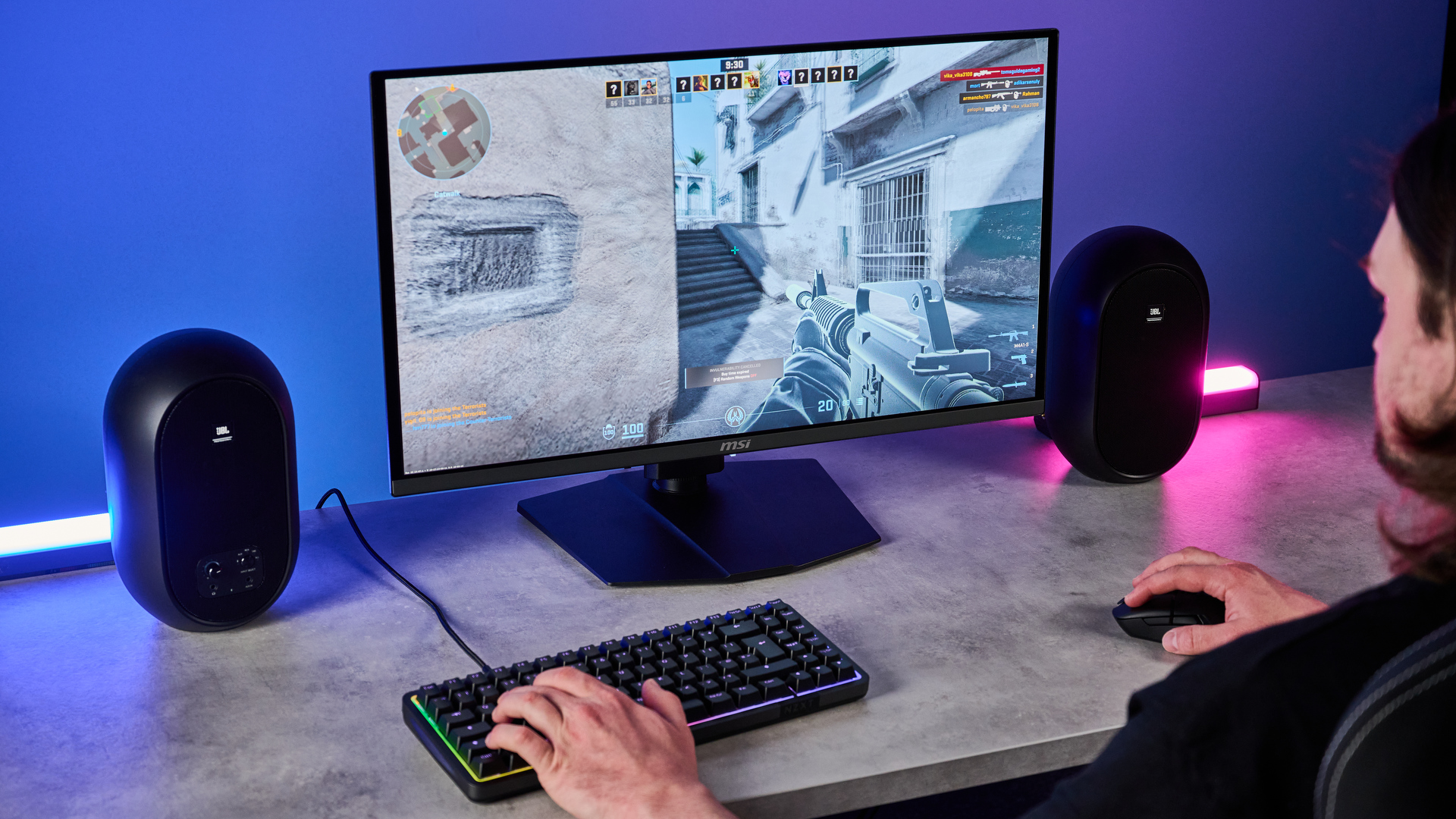
Specifications
Reasons to buy
Reasons to avoid
The MSI MPG 272URX QD-OLED is one of the prettiest and best-built monitors out there, offering best-in-class color reproduction and accuracy. It is the undisputed king of OLEDs, boasting a wide color gamut for both gaming and photo/video editing. Its 10-bit color depth means it's capable of showing 1.07 billion individual hues too. In darker games, you can make out the finer details on enemies, while in other games, neon lights appear bright but never oversaturated — balanced enough for you to appreciate different shades and hues.
For competitive gaming, the MPG 272URX boasts a 240Hz refresh rate so you won’t experience any choppiness in fast-paced games, especially in racing titles. The monitor also has a 0.03ms response time and, in our testing, we didn’t experience any ghosting.
Sporting a sleek, minimalist design with lovely (but not garish) RGB lighting on the back panel, the MPG 272URX should fit right into an existing gaming or work setup. Its 27-inch screen also makes quick work of navigating massive spreadsheets or cluttered inventories in games.
The $1,099 price tag may leave a sour taste in some people’s mouths but if you can afford it, the MPG 272URX is well worth the premium.
Read our full MSI MPG 272URX QD-OLED review.
The best 4K monitor
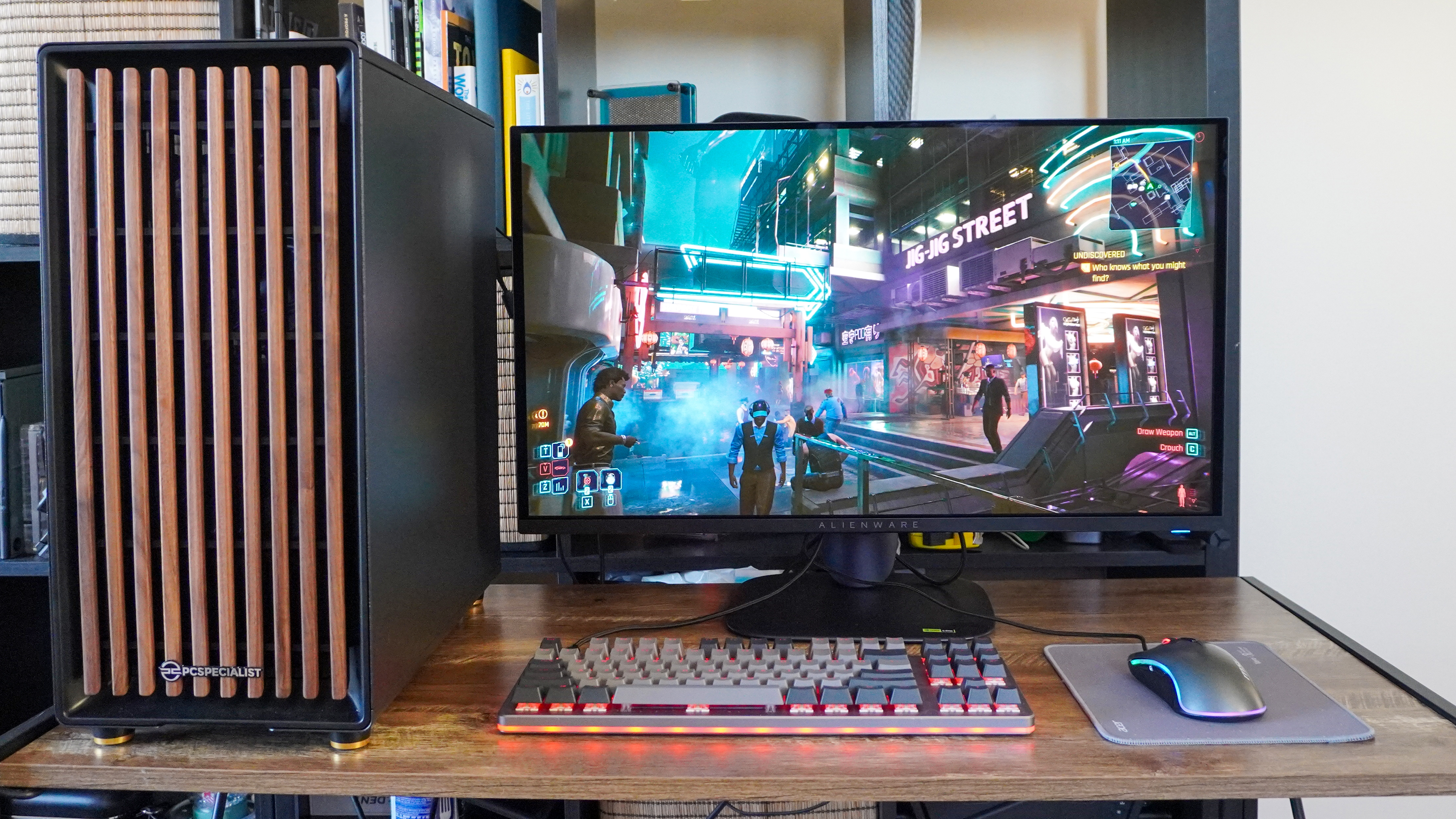
Specifications
Reasons to buy
Reasons to avoid
If you're rocking an RTX 50-series gaming PC and want to see those visuals shine, look no further than the Alienware AW2752Q. Really, I'm jealous of our reviewer who got his hands on it. It's a 27-inch 4K (3840 x 2160) OLED monitor featuring a 240Hz refresh rate and a 0.03ms response rate, so you bet this will make PC games sing, whether it be competitive multiplayer titles or visually stunning AAA games.
Sure, it's a shame that it's not the brightest monitor around (as with many OLED panels) and it doesn't sport a KVM switch, especially for that high $899 price, the near-nonexistent input lag, impressively clear details and color accuracy, along with the sleek, compact design, make this a monitor to keep on anyone's radar.
Not just for gamers, either, as our testing shows that it works wonders for productivity, too. If you're also powering through photo or video edits, the Alienware AW2752Q will impress (if your budget allows for it).
Read our full Alienware AW2752Q review.
The best super ultrawide monitor
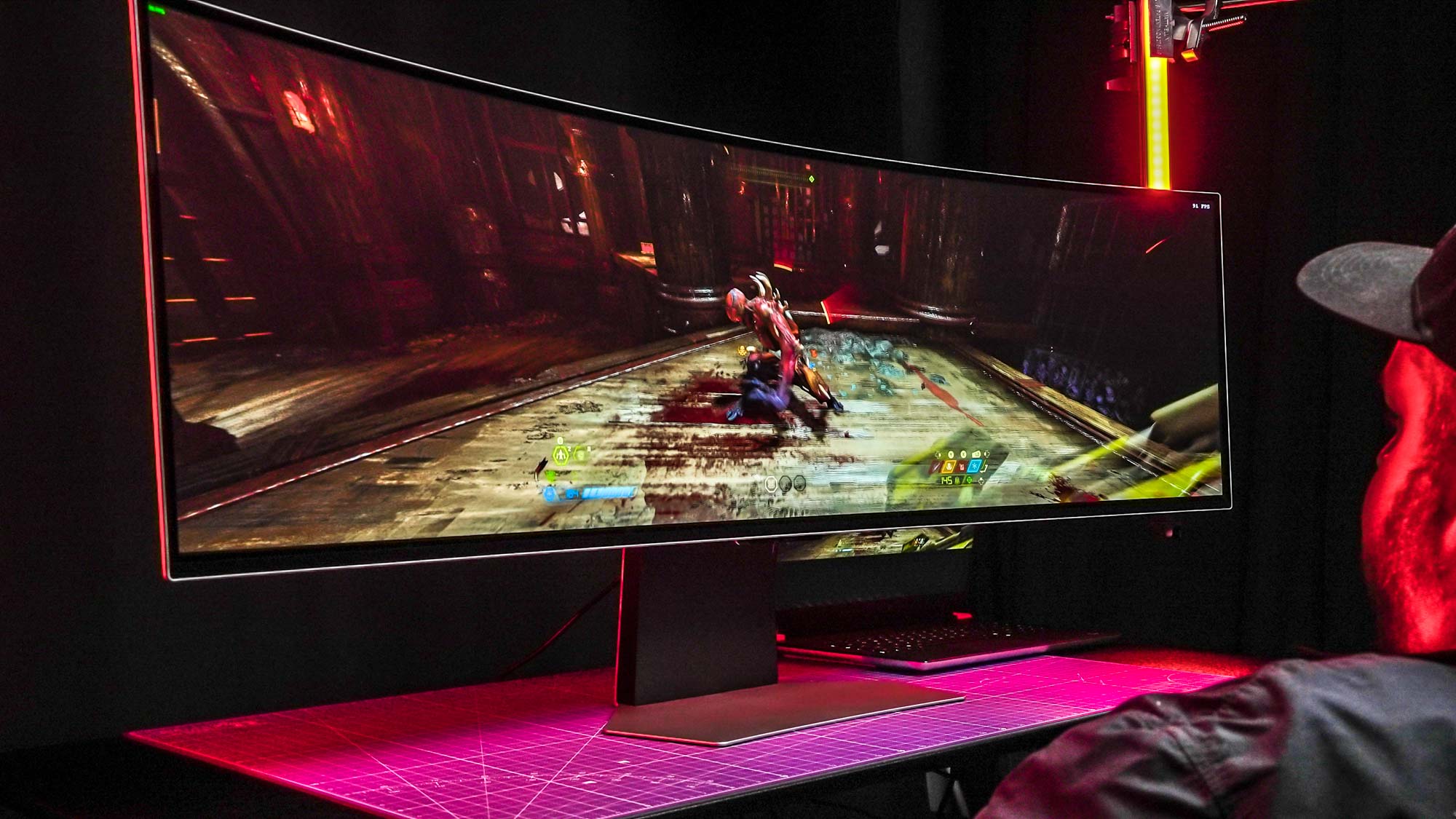
Specifications
Reasons to buy
Reasons to avoid
The Samsung Odyssey OLED G9 instantly grabs your attention thanks to its stupendous size. This was the first-ever 49-inch OLED gaming monitor, and even years after its initial release, it's easily still one of the most immersive panels around,
Yes, it's pretty pricey. Yet I often see it retail for as low as $1,299 (or less) in sales. While that’s still a lot of cash, the almost ridiculous amount of screen real estate you’re getting for that investment makes the Samsung Odyssey OLED G9 a no-brainer purchase for fans of the 32:9 aspect ratio that can afford it.
Having owned 21:9 traditional ultrawide monitors for years before I picked up my current Samsung beast, I can honestly say I’d struggle to return to a PC display that wasn’t super ultrawide. That aspect ratio essentially means you’re getting two 16:9 monitors squished together in a single display, and when it comes to productivity, it’s bliss to work on.
If you have the money to spare, you're getting a feature-rich monitor with 1,800R curvature to give you wrap-around vision that makes it instantly effortless to lose yourself in the modern PC games. This Samsung's super-speedy 0.03ms response time and 240Hz refresh rate also ensure it's the ideal monitor for fans of first-person shooter games.
There's so much to admire here with the sheer class and craft Samsung has clearly put into making this incredible OLED super ultrawide. Providing you have the funds (and desk space), you should pick one up immediately if you love 32:9 screens.
See our full Samsung Odyssey OLED G9 review.
How we tested these monitors
When seeking out the best monitors, we test every display we review with our Klein K 10-A colorimeter, paired with testing software. We use this high-quality scope to measure the display's brightness levels, color gamut and color accuracy.
Brightness is measured in nits, or candela per square metre (cd/m2). More nits means a higher brightness, which translates into a clearer picture, brighter colors and usually a more realistic-looking image. For basic monitors, we expect a display backlight to produce between 2-300 nits of brightness, though HDR (high dynamic range) displays will often exceed that with a higher maximum brightness. However, brightness alone doesn't make for a great display, since some monitors will wash out colors or offer inconsistent backlight that varies in some portions of the display panel.
HDR also presents its own testing challenges, as new capabilities and standards allow a monitor to offer higher peak luminance than our standard tests will register. When in doubt, read an individual review for a discussion of these issues and how an individual product will handle each.
Color is the other big concern for displays. Monitors that produce more colors have a larger color gamut, as measured under the sRGB or P3 color standards. This is presented as a percentage, with higher percentages indicating more colors.
Color accuracy is the other aspect of color, which lets us measure how closely a monitor can reproduce a given shade. This is presented as a Delta-E rating, which indicates the level of deviation from perfect. Zero is a perfect score, while higher numbers indicate lower accuracy.
We also test a display's response time, using a Leo Bodnar input lag tester. This device measures how long it takes a signal to travel from a source device to the monitor and show up on the display. Measured in milliseconds, this number is most useful for gamers and anyone who needs immediate onscreen feedback from any input.
Finally, every monitor we test is also used for web browsing, streaming video and gaming, as well as the writing of the review itself. Our anecdotal testing will often allow us to note the quirks of a display that lab testing might miss, whether it's difficulty in scaling content or issues with backlight or color reproduction.
Finding the best gaming monitor
Gaming has its own unique concerns. When the difference between victory and defeat can come down to split-second timing, you can't afford long lag times. If you want one of the best gaming monitors, we recommend finding a display that offers response times of 15 milliseconds or less.
Smoother gameplay is also part of what you pay for in a gaming monitor, so pay attention to what frame-syncing technology a monitor supports. AMD FreeSync and Nvidia G-Sync both allow the monitor and the graphics card to coordinate the refresh rate of the screen with the output of the GPU, but they approach this problem in slightly different ways, and a given monitor will likely provide support for only one or the other format. If your gaming rig uses Nvidia cards, you'll want a G-Sync capable monitor, while AMD-based systems will play nicely with a FreeSync display.
Choosing a secondary monitor
For a secondary monitor to use on the road, you'll want something that's small enough to carry with your laptop, and simple enough to set up and use within moments. For this, we recommend choosing one with a USB-C port for connectivity, as that allows the monitor to use a single cable for both video signal and power. While the basic advice of "bigger is better" does still have some application here, it's also worth considering how well a portable monitor matches the size of your laptop display, since a larger display panel will have different dimensions than your laptop, and may not fit as easily into your backpack or laptop bag.
Get instant access to breaking news, the hottest reviews, great deals and helpful tips.

Darragh is Tom’s Guide’s Computing Editor and is fascinated by all things bizarre in tech. His work can be seen in Laptop Mag, Mashable, Android Police, Shortlist Dubai, Proton, theBit.nz, ReviewsFire and more. When he's not checking out the latest devices and all things computing, he can be found going for dreaded long runs, watching terrible shark movies and trying to find time to game
- Alex WawroSenior Editor Computing
